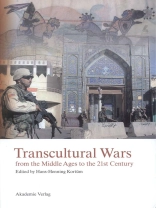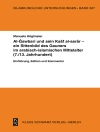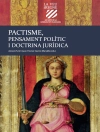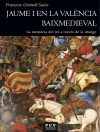Eine von der Deutschen Forschungsgemeinschaft getragene Forschergruppe an der Universität Regensburg untersucht seit einigen Jahren im Rahmen einer Neuen Militärgeschichte ‘Formen und Funktionen des Krieges im Mittelalter’. Im März 2004 wurde auf einer international und interdisziplinär ausgerichteten Fachtagung, organisiert von Mitgliedern der Regensburger Forschergruppe zusammen mit dem Hamburger Institut für Sozialforschung, versucht, traditionelle Epochengrenzen, wie sie zwischen Mittelalter und Neuzeit nach wie vor bestehen, zu überwinden. Einen vielversprechenden Ansatz hierfür bot die gerade in jüngster Zeit sehr kontrovers geführte Debatte über die ‘Kulturen des Krieges’ (John Keegan) und die mit ihr untrennbar verbundene Frage nach der typologischen Verortung der jeweiligen Konflikte. Anhand der Kategorie des ‘transkulturellen Krieges’ wurde der Frage nachgegangen, welche Gemeinsamkeiten es zwischen mittelalterlichen und neuzeitlichen Kriegen gibt, wie neu die derzeit viel beschriebenen ‘Neuen Kriege’ wirklich sind. Darüber hinaus wurde epochenübergreifend untersucht, was Krieg zwischen Kulturen ausmacht und wie er sich typologisch fassen lässt. War is a predominant theme in medieval as well as in modern historical research. Whereas both disciplines tend to dwell on this topic separately, this volume aims at crossing the artificial line of division between medieval and modern wars. War is regarded as a historical phenomenon the continuitiesof which prevail over any time-specific alternations. A special kind of war is the one waged between or on the line of different cultures. Such transcultural wars are currently a widespread phenomenon – but have been on the agenda throughout history. Different examples and aspects of transcultural wars are discussed in this volume. All papers were presented and discussed at a international conference held in Regensburg in March 2004 which brought war-specialists of the Middle Ages and the Modern Period together. With regard to the category of ‘transcultural’ wars the question has been raised what medieval and modern wars have in common and whether the so called ‘New Wars’ are that new at all. On top of that it has been examined what characteristics can be ascribed to transcultural wars, what makes these wars special and how they can best be classified.
Tabela de Conteúdo
I. INTRODUCTION Hans-Henning Kortüm: Clash of Typologies – The Naming of Wars and the Invention of Typologies II. GENERAL TYPOLOGY OF TRANSCULTURAL WARS Stephen Morillo: A General Typology of Transcultural Wars – The Early Middle Ages and Beyond Michael Prestwich: Transcultural Warfare – The Later Middle Ages Bernhard R. Kroener: Antichrist, Archenemy, Disturber of the Peace. Forms and Means of Violent Conflict in the Early Modern Ages Hew Strachan: A General Typology of Transcultural Wars – The Modern Ages III. RULES OF WAR AND WAR WITHOUT RULES Matthew Strickland: Rules of War or War without Rules? – Some Reflections on Conduct and the Treatment of Non-Combatants in Medieval Transcultural Wars Martin van Crefeld: A Tale of Two Wars IV. SEXUAL VIOLENCE IN WARS Corinne Saunders: Sexual Violence in Wars – The Middle Ages Birgit Beck-Heppner: Gender Specific Crimes in Wars of the Modern Age V. CONCEPTS AND STEREOTYPES OF THE ENEMY AND THEIR FUNCTION Hannes Möhring: The Christian Concept of the Muslim Enemy during the Crusades Michael Hochgeschwender: Enemy Images in the American Civil War – A Case Study on Their Function in a Modern Society VI. PROTAGONISTS OF WAR – PLURALITY OF VIOLENCE AND IST MONOPOLY Andrew Ayton: From Muhi to Mohács – Armies and Combatants in Later Medieval European Transcultural Wars Daniel Hohrath: Soldiers and Mercenaries; Protagonists of Transcultural Wars in the Modern Ages INDICES Index locorum Index personarum Index rerum












